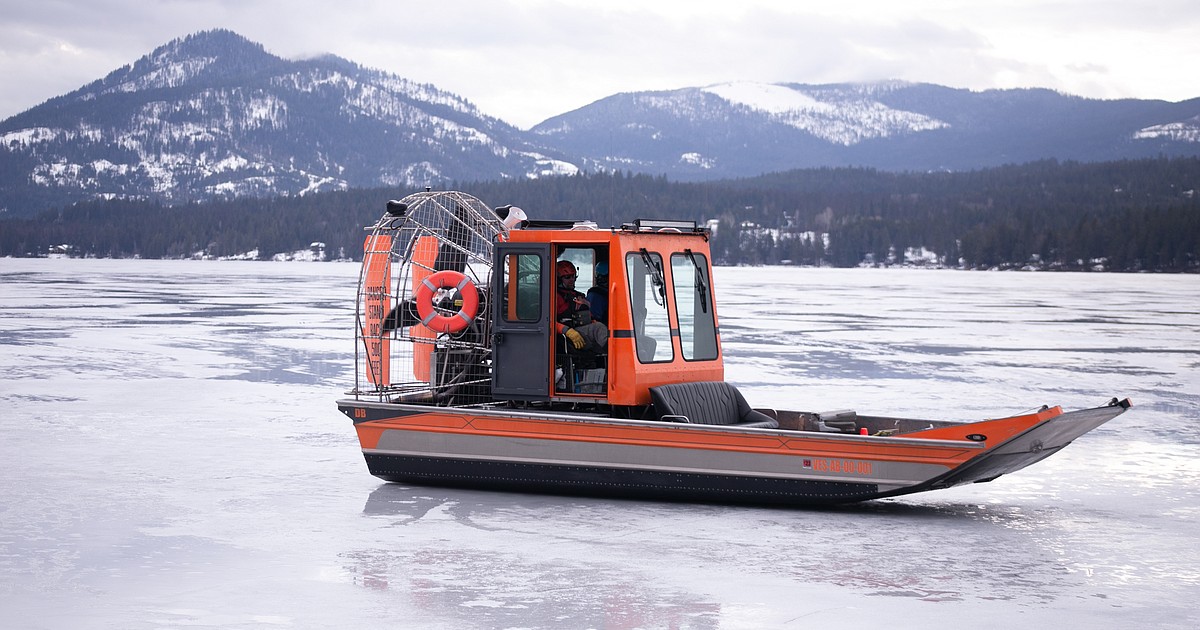COCOLALLA — Bonner County first responders are gaining expertise in winter search and rescue capabilities.
Local first responders participated in a two-day training at Lake Cocolalla focused on developing skills to locate and manage hazardous spills during the winter months.
The training was organized by BNSF Railway in partnership with the Whitewater Rescue Institute of Montana, which specializes in inland oil spill response and rescue training.
“It’s for firefighters, EMS, police, whoever would respond to an accident,” Bob Howard, director of emergency services, said Thursday. “Several years ago we partnered with BNSF because they have railroads throughout our county and have been very good at creating local partnerships if we need to address any type of rail access.”
Orange cones and nets posed as obstacles on the icy surface of Lake Cocolalla. Participants navigated obstacles using an airboat at one of the three training stations.
An airboat is a craft that does not have a motorized engine that hangs in the water. Instead, the craft is powered by a large fan attached to the rear of the craft. Airboats can take off from a boat launch during the winter months when bodies of water are covered in ice. The craft is owned by BNSF and was launched from City Beach in 2019 as part of an earlier winter training exercise.
Additionally, first responders learned the techniques used to remove living and non-living things from the ice in the event of a breakthrough. Members of Whitewater donned drysuits and volunteered to be pulled from the icy lake as part of the training.
The training exercises also provided first responders with training on how to effectively clean up contamination from a frozen body of water. According to BNSF information, 125,000 first responders have been equipped with safety training and education since 1996. Training is free for first responders and emergency personnel.
“As part of BNSF’s ongoing commitment to safety, we hosted a hands-on winter weather training event with first responders,” Lena Kent, BNSF’s general manager of public affairs, said Thursday. “We want to make sure we can work with communities and respond quickly in the unlikely event that a hazmat emergency occurs”
The training emphasized techniques involving oil spills trapped under a layer of ice. In a clean-up operation like this, first responders will start by cutting a large hole in the ice. Then the oil, or other form of contamination, will rise to the surface of the hole where it can be removed. Ice blocks can function as a type of dam that guides contaminants into the hole, helping to clean up effectively.
“Airboats are an essential tool in ice operations and rescues,” Kent said. “In addition, participants received hands-on practice with self-rescue, teammate support, and oil recovery techniques.”

